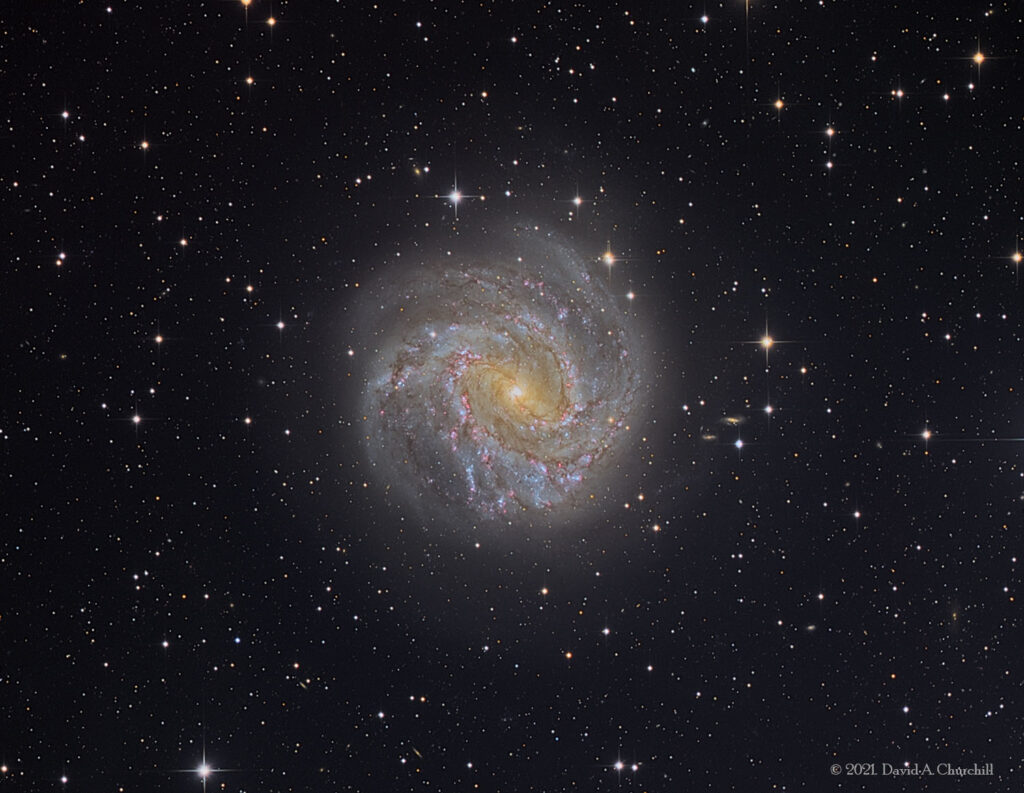Messier 83
The Southern Pinwheel. Barred-Spiral Galaxy, Hydra
- Description
- Technical
- Links
Messier 83 or M83, also known as the Southern Pinwheel Galaxy and NGC 5236, is a barred spiral galaxy approximately 15 million light-years away in the constellation borders of Hydra and Centaurus. Nicolas Louis de Lacaille discovered M83 on February 23, 1752 at the Cape of Good Hope. Charles Messier added it to his catalogue of nebulous objects (now known as the Messier Catalogue) in March 1781. It is one of the closest and brightest barred spiral galaxies in the sky, and is visible with binoculars. Its nickname of the Southern Pinwheel derives from its resemblance to the Pinwheel Galaxy (M101).
M83 is a massive, grand design spiral galaxy. Its morphological classification in the De Vaucouleurs system is SAB(s)c, where the ‘SAB’ denotes a weak-barred spiral, ‘(s)’ indicates a pure spiral structure with no ring, and ‘c’ means the spiral arms are loosely wound. The peculiar dwarf galaxy NGC 5253 lies near M83, and the two likely interacted within the last billion years resulting in starburst activity in their central regions.
The star formation rate in M83 is higher along the leading edge of the spiral arms, as predicted by density wave theory. NASA’s Galaxy Evolution Explorer project on April 16, 2008 reported finding large numbers of new stars in the outer reaches of the galaxy – 20 kpc from the center. It had hitherto been thought that these areas lacked the materials necessary for star formation.
M83 is at the center of one of two subgroups within the Centaurus A/M83 Group, a nearby galaxy group. Centaurus A is at the center of the other subgroup. These are sometimes identified as one group, and sometimes as two. However, the galaxies around Centaurus A and the galaxies around M83 are physically close to each other, and both subgroups appear not to be moving relative to each other.
Telescope: Planewave CDK17 (FR) f4.5
Mount: Astro Physics 1600GTO
Camera: QHY16200A/ Integral FW
Guider: Agena Starguide II / SBIG STi
L: 49×10 mins = 490 mins, R: 24×10 mins = 240 mins, G: 24×10 mins = 240 mins, B: 24×10 mins = 240 mins
Total Imaging Time: 20h 10m
Data Imaged remotely over 5 nights during May 2021.
Imaged from Observatorio El Sauce, Chile, in partnership with Fred Espenak.
Data acquisition & Processing by David Churchill.

